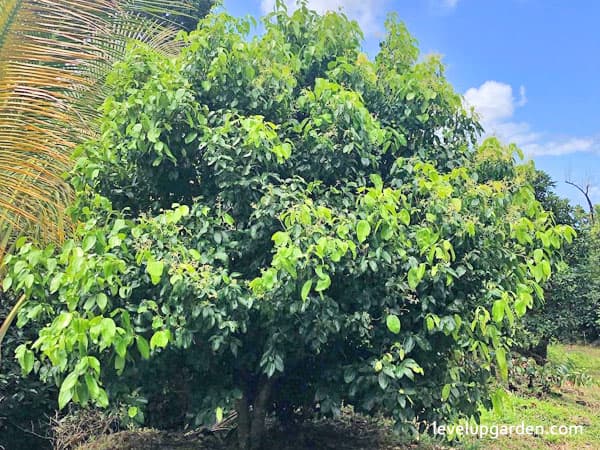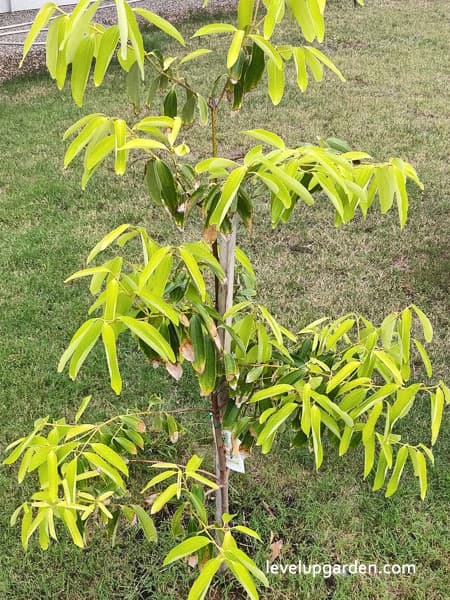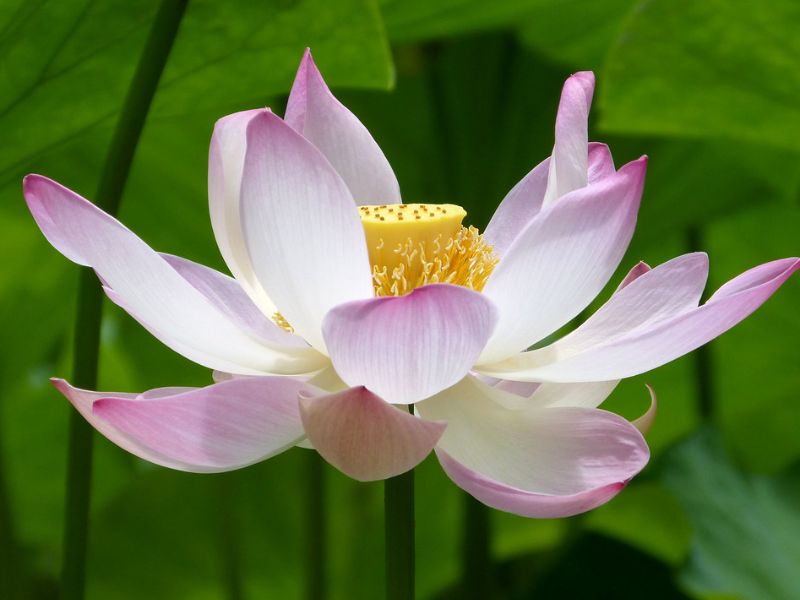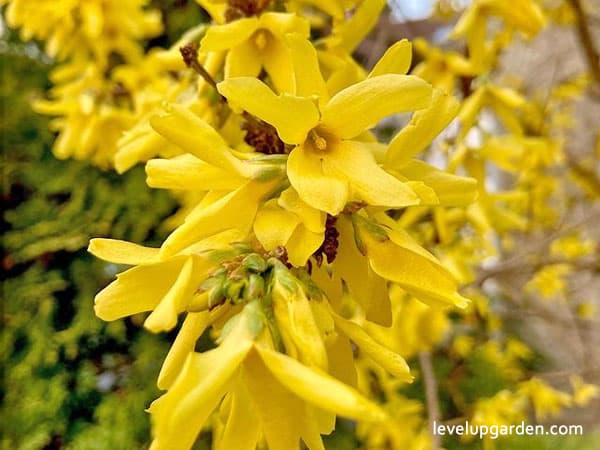The Cinnamon Tree (Cinnamomum Verum) is an evergreen tropical small tree native to Sri Lanka and does not grow well in North Carolina. The leaves are leathery, teardrop-shaped, and rich green, deepening to purple as they mature. The dark purple berries and small yellow flowers also add to the charm and uniqueness of the Cinnamon Tree. In this article, you will figure out the profile and information about this tree.

I. Cinnamon Tree Profile
| Common Name | Cinnamon tree, cassia |
| Scientific name/Botanical name | Cinnamomum Verum. Previously known as Cinnamomum Zeylanicum |
| Family | Lauraceae |
| Plant Type | Tree, shrub |
| Mature Size | 3 – 60 feet tall, 2 – 20 ft. wide |
| Sun Exposure | Full, partial |
| Soil Type | Loamy, well-drained |
| Soil pH | Acidic to neutral (6.2–7.2) |
| Bloom Time | Summer |
| Flower Color | White, yellow |
| Hardiness Zones | 9 – 11 (USDA) |
| Growth Rate | Slow |
| Native Area | Asia |
The cinnamon tree is an ancient and hardy tree. Thousands of years old in its native Sri Lanka, few trees have such a wonderful variety of characteristics as the cinnamon tree. The tree has a distinctive, aged appearance, with few but substantial branches branching out from the trunk and many multi-veined, teardrop-shaped leaves.
The leaves are green and leathery, but they turn purple as they mature, adding charm to the tree. The dark purple berries and delicate yellow flowers blend perfectly with the color of this tree and will attract attention wherever it is planted.
III. Cinnamon Tree Growing and Care Conditions

Cinnamon is a small semi-tropical tree that can easily be grown indoors as a houseplant or outdoors as a large spice tree, and it is very effective. The leaves are thickly oval (or lanceolate), 4 to 7 inches long, and turn a deep green color with age. Tends to be hardier in southern regions. Cinnamon is harvested from the bark of branches that are two or more years old. The tree can grow very rapidly and its history can be traced back to the time of the Egyptians. Cinnamon has also played an important role in many aspects of the world spice trade.
- Light: Cinnamon does best in a sunny location, i.e., with at least 6 hours of direct sunlight. However, when it is hot and dry, it works best in the shade in the afternoon.
- Soil: Cinnamon prefers rich, well-drained soils. Sandy loams are suitable. It does not grow well in waterlogged soils, so heavy clay or hard soil is not a recipe for success. If your soil is not suitable for cinnamon, consider growing it in containers.
- Water: When watering, keep the soil lightly moist and do not water until the top 2 inches are dry. Depending on light conditions, location, and foliage, the plant should be watered once a week or daily. Be careful not to overwater, as the tree will likely rot and die if the soil is soggy.
- Temperature and Humidity: Cinnamon plants prefer warm, humid climates. In its native region, healthy growth is encouraged when average temperatures reach about 80 degrees Fahrenheit. It does not do well when temperatures fall below 40 degrees Fahrenheit or in very dry environments.
- Fertilizer: To aid in the growth and harvest of linden, it is recommended that a fertilizer such as Formula 10-10-10 be applied at the same time as watering. These trees are moderate feeders and may need to be fertilized several times during the growing season. It is important to apply fertilizer according to the label directions to avoid burning or killing the trees.
- Pests and Diseases: Mealybugs tend to be common on Cinnamon. They can be easily controlled with the use of an organic insecticide called “neem oil.” This is inexpensive and can easily be found at your local nursery or large store that sells plants. Be sure to follow the directions for use on the bottle.
- Planting: Cinnamon trees are fast-growing and require a lot of room to grow, so plant them at least 3 meters away from other trees and shrubs.
IV. Varieties
There are many varieties of cinnamon, including these varieties.
- Cinnamomum verum, often called true cinnamon or Ceylon cinnamon is known for its excellent flavor.
- Cinnamomum cassia, commonly known as Chinese cassia, is a typical type of cinnamon sold in grocery stores.
- Cinnamomum loureirii is known as Saigon cinnamon or Vietnamese cinnamon. This species has a strong taste and aroma and carries a premium price.
V. Uses
It is under its thick bark that cinnamon has become world-famous. It is inside this bark that the aroma of cinnamon is found, and it is this aroma that is ground into a spice that gives the tree its name. With this spice, you can bake pies as you have never tasted before. Puddings, desserts, pasta, and stews will also be infused with the aroma of homemade cinnamon.

And the best treat of all is the drinks. Brew a cup of chai tea, add cinnamon to hot cocoa, or even to a glass of wine. Both visually and taste-wise, cinnamon will add spice to your garden and landscape.
VI. Why should I buy Cinnamon Tree?

Cinnamon trees are famous for their uses and benefits as:
- Large, impressive, tropical evergreen
- Aromatic leaves and bark
- Many health benefits, including lowering blood sugar
- The spice imparts a distinctive flavor to meals and beverages.
VII. FAQs
Can I grow a Cinnamon tree at home?
Cinnamon is well known for its edible qualities but is rarely grown in the average home. It is, however, easy to grow. As long as the soil is slightly dry, potted cinnamon will grow well for years without special care.
What is the Cinnamon tree used for?
Cinnamon originates from a tree. People use bark as an ingredient in medicines. Cinnamon bark is used for stomach upset, diarrhea, and gas. It is also used to stimulate appetite, bacterial and parasitic infections, menstrual cramps, colds, and influenza.
How long does it take to grow a Cinnamon tree?
Cinnamon trees should be allowed to fully grow for 2 to 3 years after planting. When the bark turns brown and the leaves are firm, it is time to harvest.







